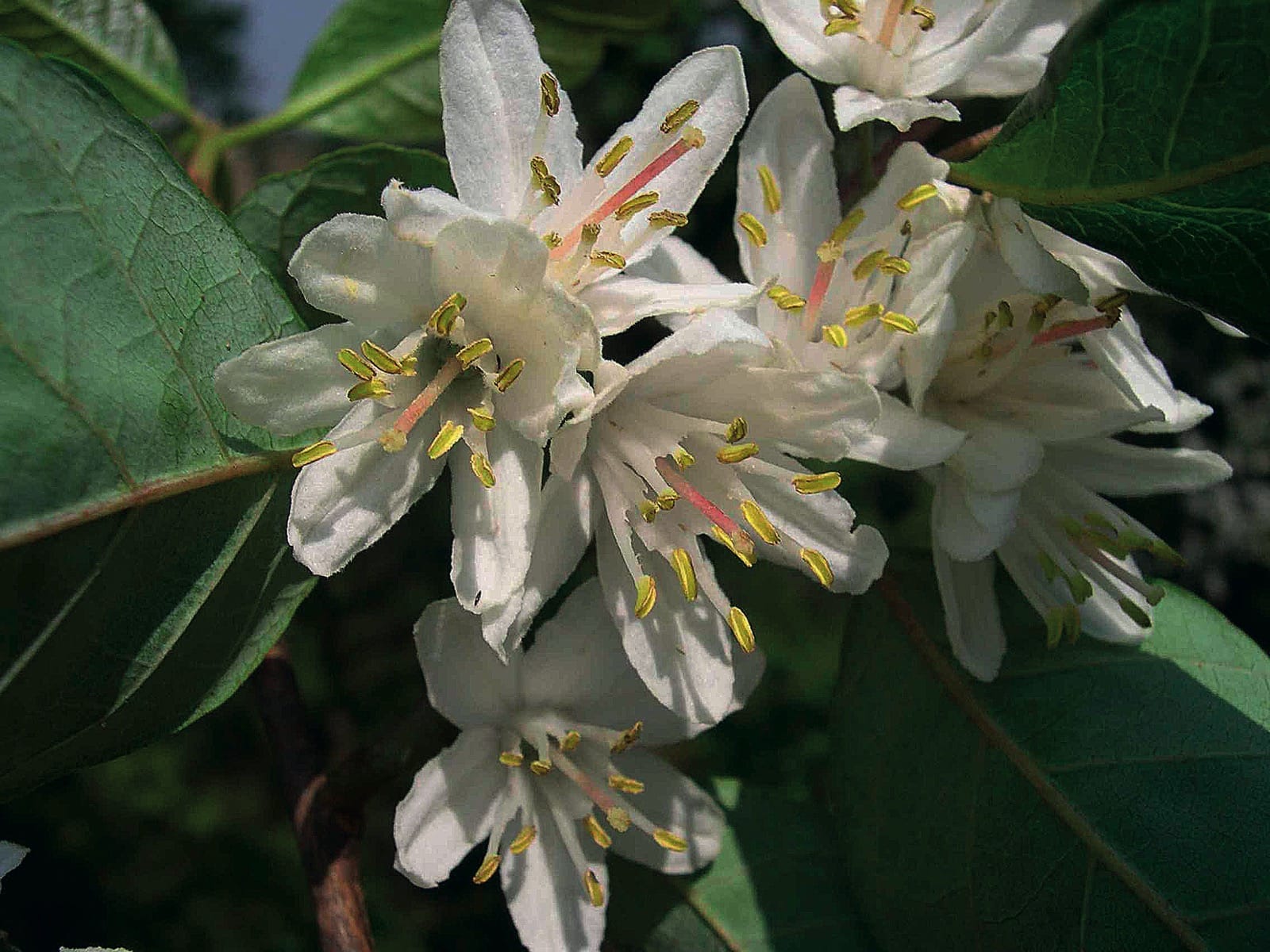Alniphyllum
Sponsor
Kindly sponsored by
Arabella Lennox-Boyd
Credits
John Grimshaw, Ross Bayton & Alan Elliott (2018)
Recommended citation
Grimshaw, J., Bayton, R. & Elliott, A. (2018), 'Alniphyllum' from the website Trees and Shrubs Online (treesandshrubsonline.
Family
- Styracaceae
Common Names
- Alder-leaf
Alniphyllum comprises three species in China, India, Myanmar, Laos, Taiwan and Vietnam. They are deciduous trees, the leaves alternate with serrate margins; stipules absent. Inflorescences are terminal or axillary, paniculate or racemose. The flowers are hermaphrodite and five-merous; the calyx cup-shaped, the corolla campanulate, with ten stamens, five long and five short. The fruit is a slightly fleshy capsule, dehiscing via five valves; the seeds have membranous wings at each end (Hwang & Grimes 1996).
Despite a number of attempts to introduce this genus to cultivation Alniphyllum remains little known and restricted to botanic gardens and specialist plant collections with mild climatic conditions. Alniphyllum fortunei was introduced in the 19th century and again in the 1980s, but the current champion trees in the UK and Ireland are from material sent from the Shanghai Botanic Garden in 1993. These maturing specimens apprear to be tolerant of the southwest’s climate, with one specimen at Carnon Downs in Cornwall now 12 m tall. Alniphyllum pterospermum Matsum. has also been described, by Huxley et al. (1992), but the only specimen traced is in the University of California Botanical Garden at Berkeley, not strictly within our area.
Further collections of A. fortunei and A. eberhardtii were introduced from Northern Vietnam in 2011, but these too are likely to be sensitive to cold winters especially in exposed locations.
Key modified from Hwang & Grimes (1996).
Identification key | ||
| 1a | Inflorescences 3–5 cm; pedicel 1–2 mm; calyx dense yellow stellate pubescence; style longer than corolla; leaf indumentum grey-yellow | A. eberhardtii |
| 1b | Inflorescences 8–15(–20) cm; pedicel 4–8 mm; calyx dense grey pubescence; style equal to or slightly shorter than corolla; leaf indumentum brown | A. fortunei |

